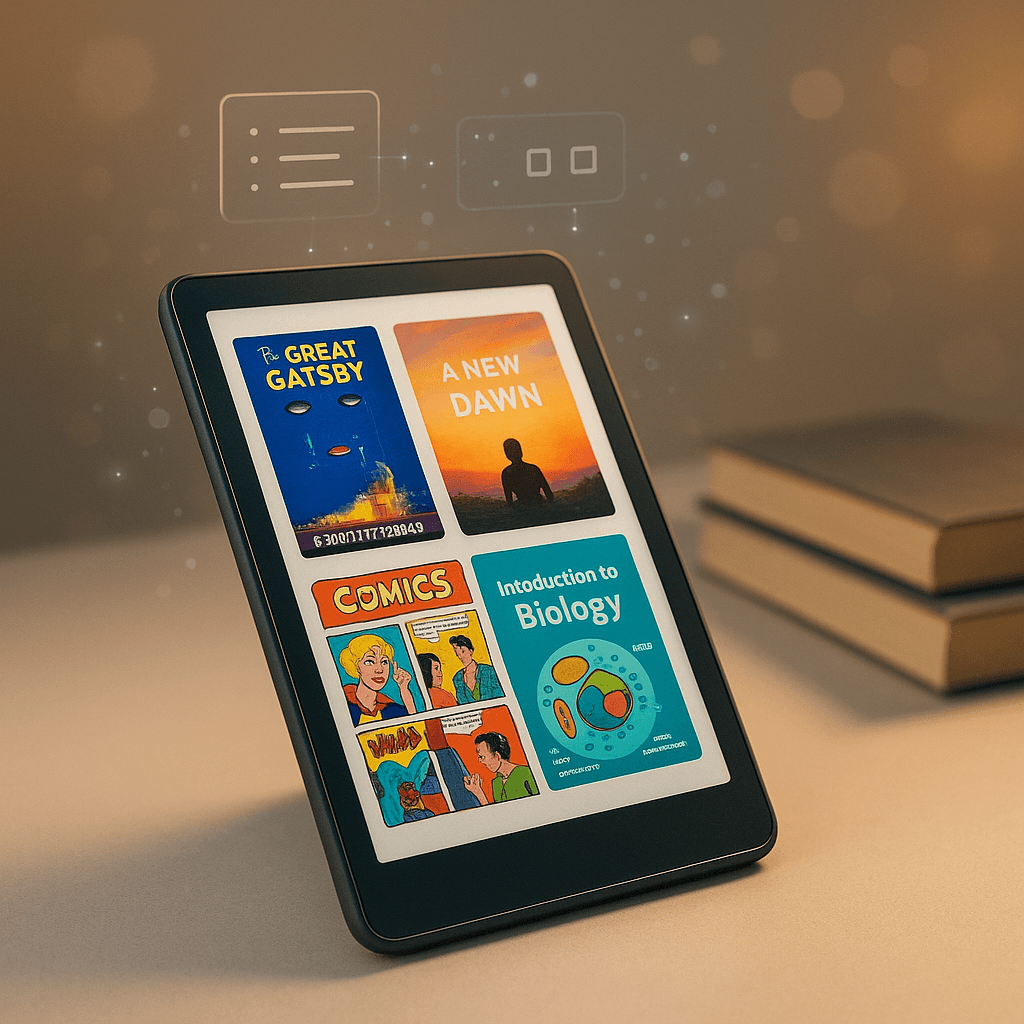Amazon just dropped its biggest Kindle shakeup in years. The company's rolling out color e-ink displays across multiple models for the first time, while packing AI-powered features like book summaries and smart search into its new Scribe lineup. For millions of readers stuck with black-and-white screens since the original Kindle launched in 2007, this marks a genuine breakthrough.
Amazon just rewrote the e-reader playbook. After 17 years of black-and-white dominance, the retail giant's new Kindle lineup brings color displays and AI-powered reading assistance to millions of bookworms worldwide. The move signals the company's most aggressive push yet to defend its e-reader kingdom against rising competition from tablet makers and specialty e-ink competitors. The flagship Kindle Colorsoft starts shipping this month with a 7-inch color display that maintains the paper-like reading experience Kindle users love. The breakthrough comes via improved E Ink Kaleido technology that renders color images at 150 pixels per inch while keeping black text crisp at 300 ppi. Early WIRED testing shows the color reproduction works best for book covers, charts, and illustrations rather than full-color photography. But for comic books, graphic novels, and educational materials, it's a game-changer that brings visual content to life without the eye strain of LCD screens. The real innovation lies in Amazon's AI integration across the new Scribe models. Story So Far uses machine learning to generate spoiler-free recaps when you pick up a book after weeks away, while Ask This Book lets readers query characters, plot points, and themes directly. Both features tap into Amazon's massive book database and reading analytics to deliver contextual answers. "We've been testing these AI features with beta readers for months," according to Amazon device executives speaking to The Verge. "The goal isn't to replace reading - it's to enhance comprehension and help people engage more deeply with books." The strategy makes sense given Amazon's broader AI ambitions. While competitors like Google and Apple focus AI on productivity, Amazon sees reading as an underexplored frontier where AI can genuinely improve user experience rather than just automate tasks. The new Scribe lineup targets the note-taking crowd that's been underserved since the original model launched. The third-generation base Scribe ($430) strips out the front light to hit a lower price point, while the Scribe With Frontlight ($550) adds adjustable warm lighting for reading in various conditions. The premium Scribe Colorsoft ($630) combines color display technology with the full suite of AI features. All three models promise faster performance and thinner profiles than the current second-generation Scribe. The timing reflects response to growing pressure from tablet makers who've steadily chipped away at the dedicated e-reader market. While Kindle still dominates with over 80% market share according to , iPads and Android tablets increasingly handle reading duties alongside other tasks. Color displays help argue for dedicated e-readers' continued relevance. The technology challenges run deeper than just adding color, however. E-ink displays refresh slower than LCD screens, making color transitions feel sluggish compared to tablets. Battery life also takes a hit - the Colorsoft models promise 8 weeks of use versus 12 weeks for traditional black-and-white Kindles. Price becomes the other major consideration. The Kindle Colorsoft Signature Edition at $320 costs nearly double the standard Paperwhite's $180 price tag. For casual readers who stick mainly to text-based novels, the color premium may be hard to justify. But for educational content, children's books, graphic novels, and reference materials, the upgrade could prove transformative. The market timing aligns with broader e-book trends showing increased demand for visual content. Comic book sales through digital platforms jumped 23% in 2024 according to , while educational publishers report growing interest in interactive textbooks that blend text with diagrams and illustrations. new AI features also address a longstanding pain point for heavy readers: keeping track of complex narratives across multiple books and series. Professional book reviewers and literature students have particularly embraced the Ask This Book feature during beta testing, using it to quickly reference character relationships and plot developments when writing analysis.











